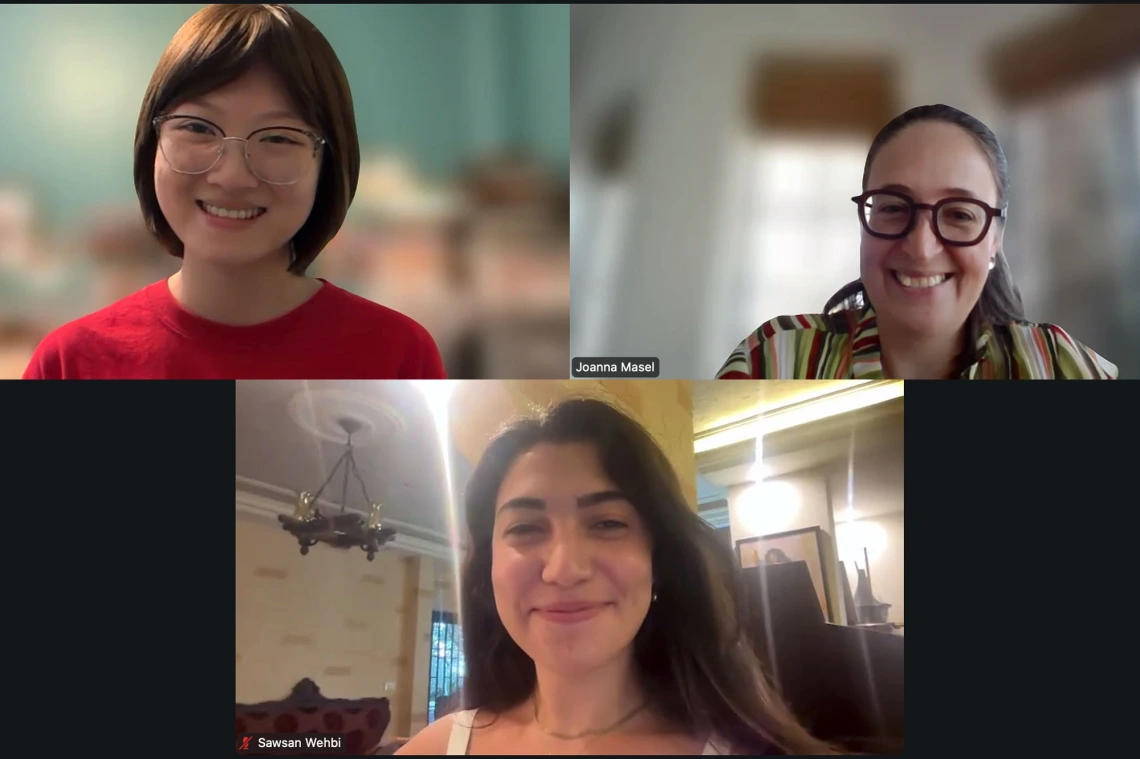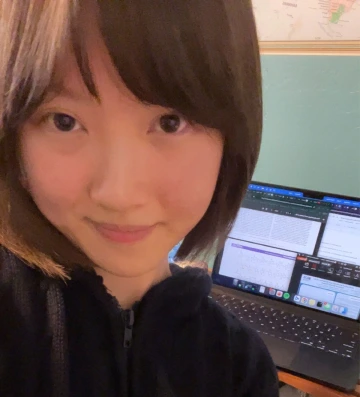Tracing the origins of life with code
2025 virtual KEYS intern Hannah Lou (she/her) used large genetic databases to study how life began in the lab of Joanna Masel.

2025 virtual KEYS intern Hannah Lou (top left) worked with doctoral candidate Sawsan Wehbi (bottom right) to study a heat-tolerant protein called reverse gyrase to better understand earth’s earliest life forms.
In the lab of Joanna Masel, professor of ecology and evolutionary biology at the University of Arizona College of Science, researchers use computers to study how life began. By analyzing ancient proteins, the team hopes to better understand the earliest life forms on Earth that may have lived nearly four billion years ago.
KEYS virtual intern Hannah Lou (she/her) joined doctoral candidate Sawsan Wehbi to study a heat-tolerant protein called reverse gyrase. This protein may have helped ancient organisms survive extreme conditions, but scientists still debate how long it’s been around. To investigate, Lou focused on the protein’s building blocks—called domains—to trace when each part may have evolved.
“Hannah and I hit moments where I realized I didn’t know something either, and we figured it out together,” said Wehbi. “That’s the best kind of science: when you learn while teaching, and your student helps push the project forward.”
Using large genetic databases, Lou analyzed sequences from many organisms and searched for patterns that reveal the protein’s evolutionary history.

Hannah Lou works virtually from her home in Phoenix, as her lab is scattered across the world in the summer.
Courtesy of Hannah Lou
“I want to make science more accessible and understandable to people,” said Lou. “I love art and drawing and enjoyed making those figures for protein domains so the average person can better understand science.”
Her work is helping piece together a timeline of life on Earth, one molecular clue at a time.
“Most of the data is there. Most of the tools to analyze it are free,” said Masel. “You don’t need special equipment—you just need good questions. People don’t always realize how open science has become. The biggest limit is simply knowing what to look for.”
Take a closer look at how KEYS interns are helping advance real-world research across Arizona.

